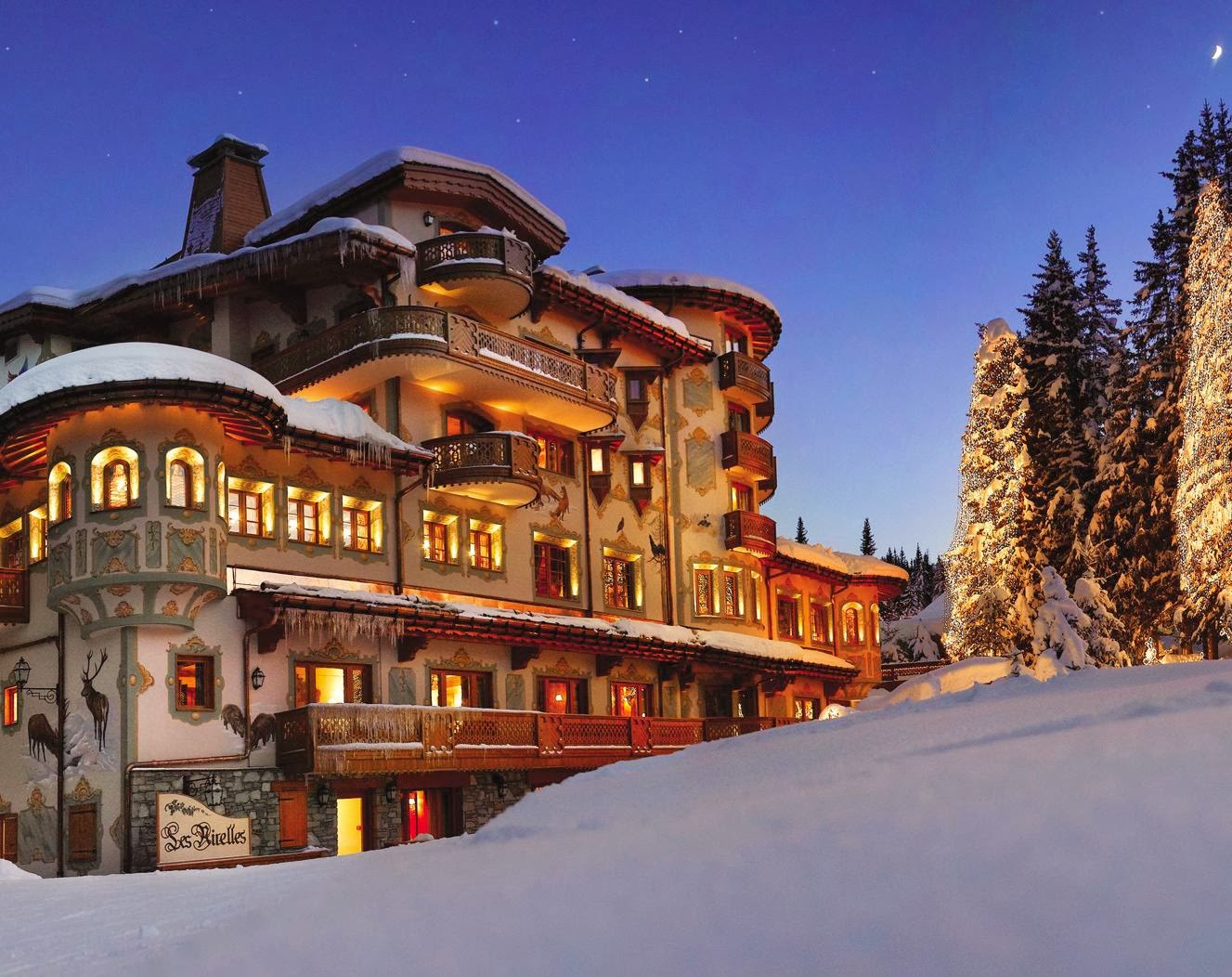Executive summary by Darmansjah
Courchevel is the name of a ski resort located in the commune of Saint-Bon-Tarentaise in the French Alps, in the Tarentaise Valley, Savoie, Rhône-Alpes region, France country. It is a part of Les Trois Vallées, the largest linked ski area in the world. Courchevel also refers to the towns of Courchevel 1300 (Le Praz), Courchevel 1550, Courchevel 1650 (Moriond), and Courchevel 1850, which are named for their altitudes in metres. They are situated in the commune of Saint-Bon-Tarentaise. The resort centre of Courchevel is in fact at 1,747 metres (5,732 ft).[1] The somewhat misleading name Courchevel 1850 was chosen for marketing reasons to compete with arch rival Val d'Isère. It is the Jardin Alpin area of Courchevel 1850 (not the centre) which is actually located at 1,850 metres (6,070 ft).
The original resort was planned during World War II with a study in 1942 by the Vichy regime and in a doctorate by the town planner Laurent Chappis. Chappis was a natural choice to direct the development of the resort in the immediate post war years. Courchevel 1850 was significant, as it was the first resort in France to be constructed from scratch, rather than based around an existing village.
Courchevel is the most eastern resort of the Three Valleys, the biggest connected ski area in the world. It is renowned for its excellent lift system which is virtually queue free, even at the busiest of times.
Although Courchevel consists of four satellite villages — Courchevel Le Praz, Courchevel 1550, Courchevel 1650 and Courchevel 1850 — it is most famous for its highest resort, the exclusive village of Courchevel 1850. Named the St. Tropez of winter sports, it attracts a select clientele of VIPs and royal families, including Prince William and Kate Middleton, the Beckhams, Christina Aquilera,Geri Halliwell, Lionel Richie, the Saudi royal family, Peter Andre, Robbie Williams, Roman Abramovich, George Clooney, Giorgio Armani, the King of Morocco and many others.
In the 2011-2012 season Courchevel rebranded, changing the names of each of the four villages in a move away from the association with altitude. Courchevel 1850 is now known simply as Courchevel, Courchevel 1650 has been renamed Courchevel Moriond; Courchevel 1550 is now called Courchevel Village and Courchevel 1330, aka Le Praz, has been renamed Courchevel Le Praz.
Courchevel has 11 hotels with a 5-star ranking. In 2011 France introduced a very prestigious 6th star ranking for hotels, named "palaces". The palace 6th star ranking is only awarded to the most prestigious, exclusive and luxurious hotels in France. No more than eight hotels in France have been crowned with this rating. Two of those eight hotels are in Courchevel tree-lined Jardin Alpin area. No other ski resorts in France have hotels with the palace ranking.
Courchevel is also known for its fine dining. It's the ski resort with the most Michelin starred restaurants. A total of seven restaurants share 11 Michelin stars, including four restaurants that have been awarded two Michelin stars, including Le Chabichou. It also hosts a variety of luxury shops including Louis Vuitton, Hermes, Valentino, Prada, Cartier, Fendi, Dior and Chanel.
Although the large majority of Courchevel's visitors are of British nationality (source Courchevel Tourist Agency) the resort is also known for the wealthy Russian elite who flock to the resort during Russian Orthodox Christmas and Russian New Year. These are celebrated two weeks later than in Western Europe, on 7 and 13 January. Because of this, Courchevel's name has become synonymous with "winter playground of the rich and famous" in Russia.The first two weeks of January are high season weeks in Courchevel as a result here of.
Courchevel is known to be an expensive resort. One of the reasons for this are the high prices of residential and commercial property. Courchevel 1850 is the 6th most expensive place in the world with average square metre prices of €27.000 per square metre of property. It leaves cities like Hong Kong, Cannes and Tokyo behind.
Courchevel has one of the largest bases for ski instructors and other seasonal workers due to the size of the three valleys area. Courchevel's couloirs are renowned as some of the most difficult black runs in the world.
Courchevel's sister city is Park City, Utah in the United States, and it has a red-graded ski piste named "Park City".

















































